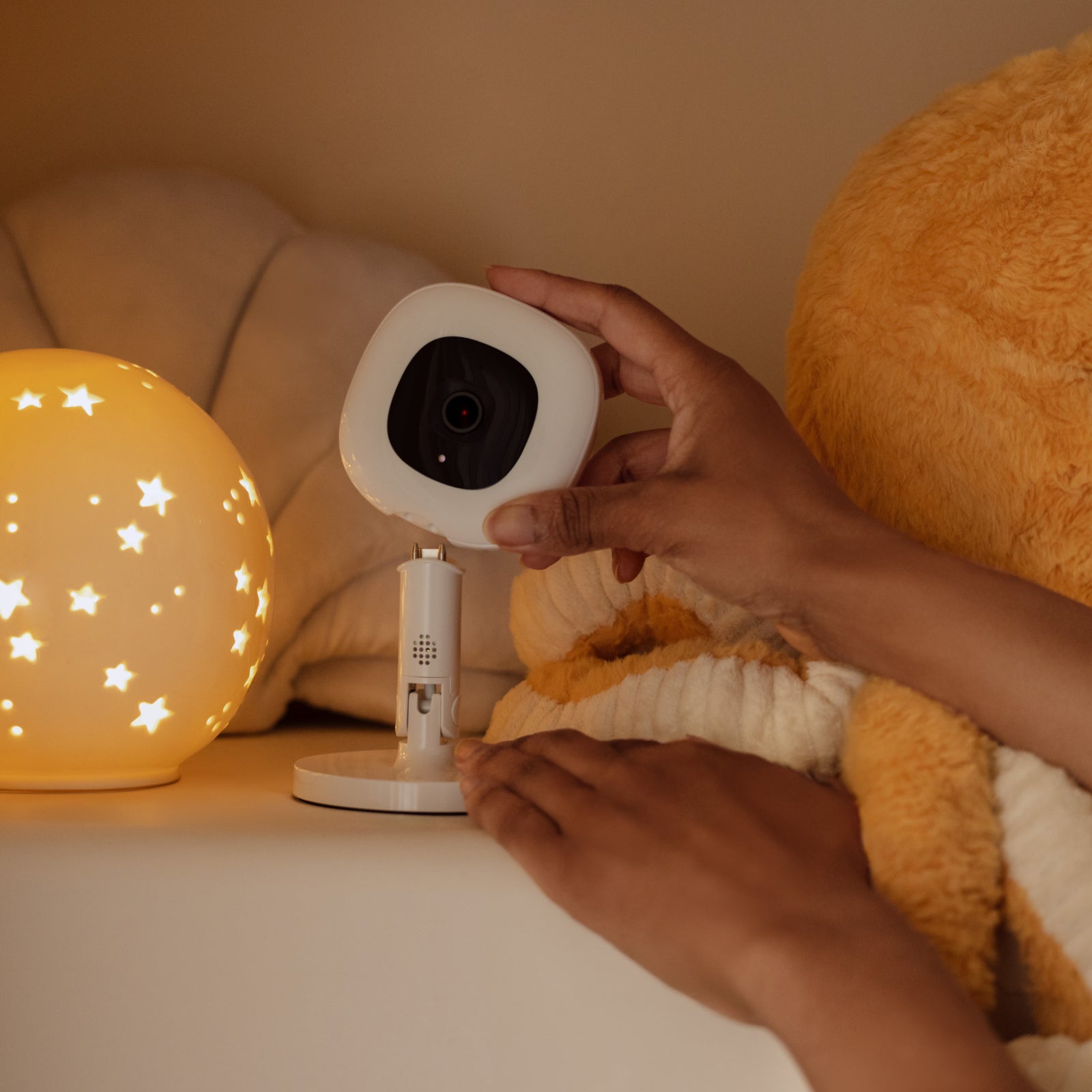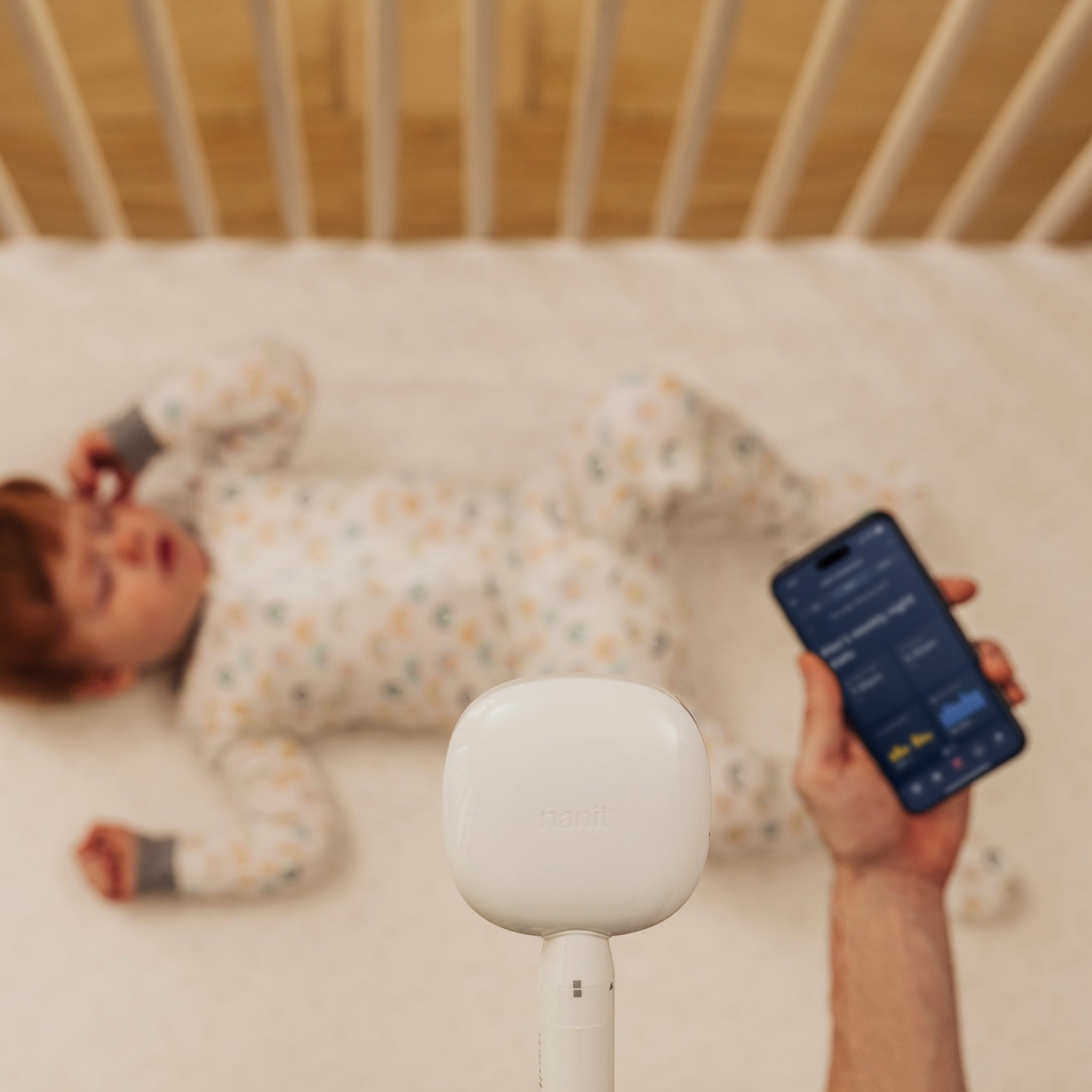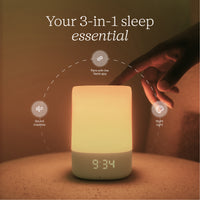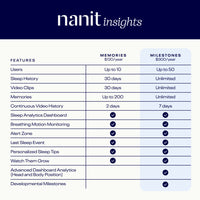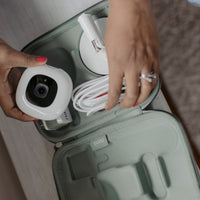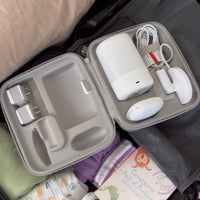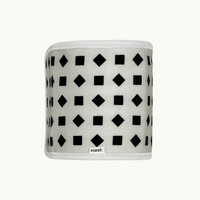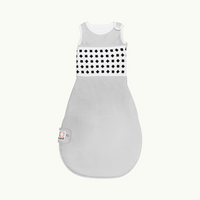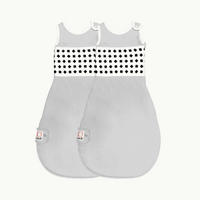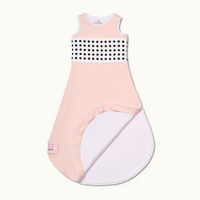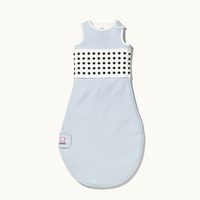You might have heard your parent-friends grumble about spending weeks slogging through sleepless nights around their baby’s four month birthday, adjusting routines, creating an ideal sleep sanctuary, and finally getting their baby to sleep in intervals longer than 30-minutes – and you sighed in relief that the sleep regression missed your baby – then wham (!), your baby’s sixth month of life rolls around and your family is hit with a sleep regression. Surprise!
But, take heart in knowing that, like the four-month sleep regression, the six-month regression is a sign that your baby is properly developing. It’s natural for babies this age to experience a leap in their social development and begin relishing the fascinating art of interacting with others – essentially, you now have a party animal that doesn’t want to leave the party. In addition to not wanting to miss out, it’s also normal for babies this age to shift from three naps a day to two longer naps, and these naps, that used to be easily achieved in a moving vehicle or stroller, now require zero motion.
The best way to get through any temporary setback in your child’s sleep is to maintain a consistent, healthy 6 month old schedule. This means keeping track of bedtimes and nighttime visits. If that sounds like a lot of mental effort, fear not. Smart baby monitors like Nanit can track your baby’s sleep, the number of times you’ve visited them, and even give you tips on how to get them to sleep longer.
Because you’re probably super fatigued, let’s keep it simple – here’s a list of the changes your baby is likely experiencing, how they’re impacting their sleep, and how to find resolution (aka, sweet sweet slumber for all involved!)
6 Month Sleep Regression: Party Animal Mentality
Your baby is now more aware of the people around them and experimenting with how to communicate via laughing, smiling, and babbling. This new fascination with communication can make it hard for baby to fall asleep when they can hear conversations, or see people they’re interested in.
To help baby sleep, remove them from the “party” (even if that party just includes one or two people) and take them to their dark, cool, and quiet sleep sanctuary. Because it may take baby a while to wind down from the excitement of social interaction have a go-to sleepy time routine that includes soothing activities like a bath, baby massage, book, or song (or all of the above!) The more consistent you are with this routine, the easier it will be for baby to associate it with sleep.
6 Month Sleep Regression: Fascination with New Skills
At around the six-month mark many babies can roll over and get on all fours. Some babies are even crawling at this stage.
Because these new abilities can tire baby out, use them to your advantage by providing plenty of safe opportunities for baby to explore their new abilities. Pay attention to your baby’s sleep signals (like rubbing their eyes, yawning, becoming fussy, or anything else you notice they do when they’re getting tired) and transition them to their sleepy space when they show these signs.
6 Month Sleep Regression: Change in Diet
Because your baby’s belly is now able to process solid foods (or at least foods that were solid before you pulverized them in a blender) an occasional “funny tummy,” rash, or vomiting in reaction to new food can make sleep more elusive. You may find that certain foods make your baby fussy, while others mellow them out.
As your baby enters the world of solids, keep a food journal to determine what foods are best at mellowing out your baby and stick to those around sleep times. For example, I found that it was really hard for my son to sleep after eating sweet potatoes, while avocados helped him get those sleepy eyes every parent adores. In addition to the food journal, introduce one food at a time, and only feed baby that and breast milk or formula for at least three days in a row to gain a clear idea of how baby reacts to that food. It’s also best to introduce the new food during the day so you can gauge how baby handles it.
6 Month Sleep Regression: Possible Intolerance for Sleep in Motion
While some babies are still soothed by the acceleration, bumps, and sways of the stroller, car, or swing, this motion may now be too distracting for your baby. “In motion sleep” also keeps the brain in a lighter sleep, preventing humans from drifting into the deeper and more restorative stages of sleep (just think about how rested you feel after airplane sleep.)
To ensure your baby can be in a still environment for sleep, plan your day so you can be home during baby’s naptimes.
6 Month Sleep Regression: Object Permanence
Baby is now on to you, and knows that you still exist even when they can’t see you. This new awareness can cause them to shirk sleep in favor of demanding your presence in a not so quiet manner. To help them trust that you will come back, so they can go to sleep without worry, play games like peek-a-boo, that hide you for a moment but show that you always reappear, explain to them that even though you’re leaving the room you will come back, and put on a happy face when you’re leaving the room, as babies at this age are attuned to facial cues.
6 Month Sleep Regression: Need for Routine
Beyond a sleep routine, routines for daily activities such as dressing, feeding, playing, and more can also help baby be more prone to sleep when they’re in that aforementioned quiet, cool, and dark sleep space. While there will be days when it’s difficult to maintain routines because of travel, illness, work, visitors, or other common life circumstances, the consistency in baby’s life will make it easier for them to be receptive to the sleep routines you’re implementing.
6 Month Sleep Regression: Cutting of Teeth (Ouch)
It is common for babies to begin teething around six months after birth – if I had teeth cutting through my gums I’d probably have trouble catching some zzzs too.
To minimize the emergence of teeth from cutting into your baby’s sleep, ask your pediatrician about pain relieving options. A few safe soothing remedies include a silicone teething ring that has been in the fridge, a diet low in refined sugar and flour, and potatoes (as these can cause inflammation), instead opting for mushy goodies like avocados, and if you’re breastfeeding carry on as the nutrients and sucking motion that accompany breastfeeding can support baby through this tricky time.
While a few nights of little to no sleep can feel like an eternity, know that with a combination of patience and persistence you will soon meet the day when you’re curious and constantly developing little person goes off to play in dream land for a gloriously long stretch of time.




